“I got to know and admire Dr. Bugliarello as a member of the board for many years when he headed Brooklyn Poly.
When I wanted to establish a program to support graduate study for new Americans, Dr. Bugliarello was the first person I asked for advice. This evolved into a fellowship program that selects 30 students every year for grants of $90,000. Dr. Bugliarello had been a member of the fellowship board since its inception in 1997. His wisdom and compassion were greatly appreciated.
Dr. Bugliarello was a great educator and wonderful friend.”
—PAUL SOROS
HONORARY SYMPOSIUM CHAIR
Join in this global metropolitan forum honoring the legacy of george Bugliarello organized by the NYU-Poly Department of civil and Urban engineering.
The symposium, Livable Cities of the Future, brings together an interdisciplinary group of engineers, civic leaders, and educators in a unique forum that will offer an open discussion of how george Bugliarello’s vision manifests itself in innovative urban planning for the cities of tomorrow. Discussions will examine the critical role engineers play in the social and economic development of cities and their ever-increasing importance in the area of policymaking.
THE SYMPOSIUM IS INTENDED TO
![]() cultivate ideas for best practices and innovative strategies for sustainable urban development
cultivate ideas for best practices and innovative strategies for sustainable urban development
![]() facilitate the evolution of New York city into a real-life laboratory for urban innovation
facilitate the evolution of New York city into a real-life laboratory for urban innovation
THE SYMPOSIUM WILL SPECIFICALLY ADDRESS
![]() experiences of private and public service operators, infrastructure agencies, elected officials, the academic community, and other stakeholders in the critical urban sectors
experiences of private and public service operators, infrastructure agencies, elected officials, the academic community, and other stakeholders in the critical urban sectors
![]() sectors critical to resilient and sustainable cities including energy, water, infrastructure, transportation, telecommunications, and environment
sectors critical to resilient and sustainable cities including energy, water, infrastructure, transportation, telecommunications, and environment
SYMPOSIUM PROGRAM
FRIDAY, OCTOBER 26, 2012
| 8:00-8:45 a.m. | Registration/Continental Breakfast | |
| Part I. Opening Session | ||
| Moderator: Mohammad Karamouz Symposium Co-Chair Director NYU-Poly Environmental Engineering and Science Programs |
||
| 8:45 a.m. | Welcome Remarks Jerry M. Hultin NYU-Poly President Symposium Chair Symposium Objectives/Overview Mohammad Karamouz Symposium Co-Chair |
|
| 9:05 a.m. | Keynote Speech Honorable Robert K. Steel New York city Deputy mayor for economic Development Economic Development Strategy and the Role of Technology and Innovation in Crafting the Economy of New York City’s Future |
|
| 9:25 a.m. | Legacy of George Bugliarello Ruth David President & CEO Analytic Services, Inc. on behalf of the National Academy of Engineering George Bugliarello: Reflections on His Global Impact on the National Academy of Engineering Richard S. Thorsen NYU-Poly Vice President Emeritus George Bugliarello: Leadership of the Polytechnic and His Vision of the Future |
|
| 10:00 a.m. | Coffee Break | |
Part II. Fundamental Needs and Emerging Challenges in Large Cities
Infrastructure Renewal: Water, Energy & Transportation
Moderator: Ilan Juran
Executive Director
NYU-Poly Urban Infrastructure Institute and Urban Utilty Center
| 10:20 a.m. | Patrick J. Foye Executive Director Port Authority of New York and New Jersey Transportation and its Critical Role in Economic Development |
| 10:40 a.m. | Andrew W. Herrmann President American Society of Civil Engineers Resources for Rebuilding the National Infrastructure: Water, Energy and Transportation |
| 11:00 a.m. | Craig S. Ivey President Consolidated Edison Company of New York Energy as the Core of New York City |
| 11:20 a.m. | Daniel (Pete) Loucks Professor of Civil & Environmental Engineering Cornell University Water as a Fundamental Need for Urban Renewal |
| 11:40 a.m | Q&A Session |
| 12:00 p.m. | Forest City Ratner Companies Working Lunch Luncheon Speaker: Honorable David Miller Former Mayor of Toronto Former Chair of the C4O Climate Leadership Group NYU-Poly Future of Cities Global Fellow Cities Act: Leadership Through Sustainability Creates Action on Infrastructure, I.T., and the Environment |
Sustainability, Information Technology & Environment
Moderator: John C. Falcocchio
Director
NYU-Poly Urban Intelligent Transportation Systems Center
| 1:00 p.m. | Joan McDonald Commissioner New York State Department of Transportation Sustainable Transportation Resources: Mobility and Infrastructure Resiliency |
|
| 1:20 p.m. | Ruthie D. Lyle IBm SmartCloud for Social Business Breakthroughs in Information Technology for Smart Cities |
|
| 1:40 p.m. | Upmanu Lall Director, Columbia Water Center Earth Institute Columbia University Climate, Water and Sustainable Cities |
|
| 2:00 p.m. | Carter H. Strickland, Jr. Commissioner New York City Department of Environmental Protection Vision of PlaNYC 2030 for Environmental Sustainability |
|
| 2:20 p.m | Q&A Session | |
| 2:40 p.m | Break | |
Part III. Challenges - The Way Forward
| Panel Discussion Moderator: Paul M. Horn New York University Distinguished Scientist in Residence and Senior Vice Provost for Research |
||
| 2:55 p.m. | Steven E. Koonin Director Center for Urban Science and Progress (CUSP) Gerard M. Mooney Vice President IBm Global Smarter Cities Thomas D. O’Rourke Thomas R. Briggs Professor of Engineering, Cornell University Theodore (Ted) S. Rappaport NYU-Poly David Lee/Ernst Eeber Professor of Electrical Engineering Q&A Session |
|
| 4:45 p.m. | Closing Remarks Katepalli R. Sreenivasan NYU-Poly Provost Senior Vice Provost for Science and Technology, NYU |
|
GEORGE BUGLIARELLO
1927-2011
George Bugliarello’s range of interests and expertise transcended many disciplines, including civil engineering, bio-medical engineering, urban development, science policy, water resources and environmental science. His vision of the role of science, innovation and education, coupled with a passion for turning his vision into reality, is reflected in today’s urban communities, forged through academic and industry interactions in ways that spur economic growth and societal well-being, while respecting the quality of human life and the environment.
THE BIOSOMA PARADIGM
In emphasizing the urgent need for a clear strategy for urban sustainability, Dr. Bugliarello recommended a new paradigm based on the biosoma—the indissoluble interaction of biology, society and machines, along with the complementary system of systems paradigm. The biosoma-environmental paradigm views the city as a complex, adaptive system where the three biosoma entities interact with the environment. Synergies and trade-offs among these entities and their interaction with sub-components such as materials, energy, information and systems, are at the heart of addressing issues of urban sustainability.
A BIOGRAPHY
George Bugliarello, President Emeritus (having served as president from 1973 to 1994), Institute Professor and former Chancellor (1994 - 2003) of Polytechnic Institute of NYU (formerly Polytechnic University), was an engineer and educator with a broad background ranging from fluid mechanics to computer languages, the environment, biomedical engineering and science policy. He held a Doctor of Science degree in engineering from the Massachusetts Institute of Technology, and was awarded honorary degrees from Carnegie Mellon University, the University of Trieste, the Milwaukee School of Engineering, the Illinois Institute of Technology, Pace University, Trinity College, Rensselaer Polytechnic Institute, and the University of Minnesota.
At the time of his death, Dr. Bugliarello was serving his second four-year term as Foreign Secretary of the National Academy of Engineering, of which he had been a member since 1987. He was a lifetime National Associate of The National Academies and served as Chair of the National Academy of Engineering Council’s International Affairs Committee.
During his long and fruitful career, he served as Chairman of the Board of Science and Technology for International Development
(BOSTID) of the National Academy of Sciences and as chairman of the National Medal of Technology Nomination Evaluation Committee. He chaired the Advisory Panel for Technology Transfer to the Middle East of the Office of Technology Assessment, and also the Committee on Science, Engineering and Public Policy (COSEPP) of the American Association for the Advancement of Science. He served as chair of the Board on Infrastructure and the Constructed Environment of the National Research Council, and of the National Academies Megacities project for the Habitat II conference. He also served as chair of the National Academies steering committee on the Megacities. Other committee service included the U.S. National Academies-Russian Academy of Sciences Committee on Terrorism Confronting the U.S. and Russia and co- chairmanship of a joint Russian-American Task Force on Urban Security.
Dr. Bugliarello’s international experience included consultantships abroad for OECD as reviewer of the science policy of several countries, and for UNESCO, assignments as specialist for the U.S. Department of State in Central Africa, the holding of a NATO Senior Faculty Fellowship at the Technical University of Berlin, membership on the U.S.-Egypt Joint Consultative Committee of the National Academy of Sciences, and membership on the Scientific Committee of the Summer School on Environmental Dynamics in Venice. He had been the U.S. member of the Science for Stability Steering Committee, and of the Science for Peace Steering Committee, of the Scientific Affairs Division of NATO. He was co-founder and co-editor of Technology in Society, An International Journal; Interim Editor-in-Chief of The Bridge (the quarterly publication of the National Academy of Engineering), served on several editorial advisory boards, authored over three hundred professional papers, and was the author, co-author or editor of numerous books.
He was a member of the Council on Foreign Relations and a Fellow of the American Society of Civil Engineers, the American Society of Engineering Education, the American Association for the Advancement of Science, the New York Academy of Sciences, and the Biomedical Engineering Society, and a Founding Fellow of the American Institute for Medical and Biological Engineering.
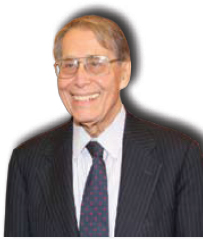
“…[Answers to overarching questions about urban ustainability]…depend on the development of new bio-socio- echnological-environmental paradigms, and of a correspondingly broader conception of engineering and of the interdisciplinarity of knowledge.” – GEORGE BUGLIARELLO
LIVABLE CITIES OF THE FUTURE
A SYMPOSIUM HONORING THE LEGACY OF GEORGE BUGLIARELLO
SYMPOSIUM GUEST SPEAKERS
RUTH DAVID
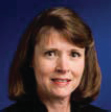
Dr. Ruth David is President and CEO of Analytic Services Inc., a nonprofit corporation that provides security related studies and analyses to the U.S. government.
Before assuming her current position, Dr. David was Deputy Director for Science and Technology at the Central Intelligence Agency. There she led research, development, and deployment of technologies in support of the intelligence process. Prior to joining the CIA, she served in several leadership positions at Sandia National Laboratories.
Dr. David is a member of the National Academy of Engineering (NAE); she serves on the NAE Council and chairs the National Research Council (NRC) Board on Global Science and Technology. She is a member of the Homeland Security Advisory Council, the Defense Science Board, the Hertz Foundation Board, and advisory boards for Wichita State University and Stevens Institute of Technology.
PATRICK J. FOYE
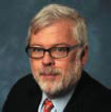
Patrick J. Foye became Executive Director of the Port Authority of New York and New Jersey on November 1, 2011.
Prior to joining the Port Authority, he served as Deputy Secretary for Economic Development for Governor Andrew M. Cuomo. Mr. Foye was a mergers and acquisitions partner at Skadden Arps and managing partner of the firm’s Brussels, Budapest and Moscow offices. He was Executive Vice President of AIMCO, a real estate investment trust and a component of the S&P 500, and served as President and CEO of the United Way of Long Island.
ANDREW W. HERRMANN
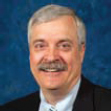
Andrew W. Herrmann P.E., SECB, F.ASCE, principal with Hardesty & Hanover, LLP, serves as President of the American Society of Civil Engineers (ASCE).
During his 38 years at Hardesty & Hanover, LLP, he has held many positions including Structural Detailer, Structural Engineer, Project Engineer, and Associate Engineer before becoming Managing Partner and then a principal. His experience includes design, inspection, rehabilitation, and construction along with managing some of the firm’s major fixed and movable bridge projects.
Within ASCE, Mr. Herrmann has served as President of the New York City Metropolitan Section, Chair of the Technical Administrative Committee on Bridges, Director of Region 1, and national Treasurer. He served on the Advisory Council for the 2003 and 2005 Report Cards for America’s Infrastructure and chaired the council for the 2009 Report Card. Mr. Herrmann has served as a spokesperson for ASCE in many magazine, newspaper, radio, and television articles and stories. He also appeared in the History Channel documentary, ‘The Crumbling of America.’Along with numerous other volunteer efforts, he has served as Director of St. Mary’s Rehabilitation Center for Children, a member of AREMA’s-Committee 15, Steel Railroad Bridges, and Chairman Emeritus of Heavy Movable Structures.
Mr. Herrmann received his bachelor’s degree in civil engineering from Valparaiso University, Indiana, and his master’s degree from the Polytechnic Institute of New York, now NYU-Poly. He is a registered professional engineer in 29 states. He is a resident of Pittsburgh, Pennsylvania.
CRAIG S. IVEY
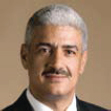
Craig S. Ivey is President of Consolidated Edison Company of New York (Con Edison), a regulated utility with 14,000 employees serving New York City and most of Westchester County. The company is a subsidiary of Consolidated Edison,
Inc., one of the nation’s largest investor-owned electric utilities, with approximately $13 billion in annual revenues and $36 billion in assets.
Mr. Ivey and his team run electric operations across the entire service area; gas operations in Manhattan, the Bronx, and parts of Queens and Westchester; and steam operations in Manhattan. They are responsible for the safety, construction, planning, design, and reliability of an electric system that presently encompasses over 129,000 miles of underground and overhead electric cable, nearly 4,300 miles of gas mains, and 105 miles of steam mains, serving over nine million New Yorkers.
Con Edison is a Dow Jones Sustainability Index company; its continuing emphasis on green initiatives to reduce carbon emissions have been recognized with commendations and awards from government agencies as well as nonprofit and private organizations, including the U.S. Department of Energy, the international Carbon Disclosure Project (CDP), and Innovest Strategic Value Investors.
Mr. Ivey serves on the boards of nonprofit and industry organizations including the Hospital for Special Surgery, the Fresh Air Fund, and the New York State Smart Grid Consortium.
Mr. Ivey joined Con Edison in November 2009 after serving as a senior vice president in two different roles at Dominion Virginia Power since 2006, first as an SVP of Electric Delivery, then as an SVP of Transmission and Distribution. He had risen through a succession of increasingly responsible positions at Dominion, where he developed a reputation for emphasizing safety, operational excellence and leadership.
A native of Roanoke Rapids, N.C., Mr. Ivey originally joined Dominion in May 1985 after spending several summers during college working in the company’s Engineering and Planning Group. In 2003, three years after becoming vice president of Electric Operations, he played a key role in expeditiously managing service restoration of 1.8 million customers after the devastating Hurricane Isabel.
Mr. Ivey earned his bachelor’s degree in Electrical Engineering from North Carolina State University, and has completed executive education programs at the University of Michigan and Harvard University. In 2005, he received the Black Engineer of the Year Award for Career Achievement in Industry.
He is married and the father of three children.
STEVEN E. KOONIN
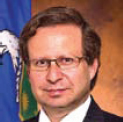
Dr. Steven E Koonin was appointed as the founding Director of NYU’s Center for Urban Science and Progress (CUSP) in April 2012. That consortium of academic, corporate, and government partners will pursue research and education activities to develop and demonstrate informatics technologies for urban problems in the “living laboratory” of New York City. Prior to his NYU appointment, Dr. Koonin served as the second Under Secretary for Science at the U.S. Department of Energy from May 2009 thru November 2011. In that capacity, he oversaw technical activities across the Department’s science, energy, and security activities and led the Department’s first Quadrennial Technology for energy. Before joining the government, Dr. Koonin spent five years as Chief Scientist for BP, plc., where he played a central role in establishing the Energy Biosciences Institute. Dr. Koonin was a Professor of Theoretical Physics at Caltech from 1975 to 2006 and was the Institute’s Provost for almost a decade. He is a member of the U.S. National Academy of Sciences and the JASON advisory group. Dr. Koonin holds a BS in Physics from Caltech and a PhD in Theoretical Physics from MIT (1975) and is an adjunct staff member at the Institute for Defense Analyses.
UPMANU LALL

Dr. Upmanu Lall is Director of the Columbia Water Center, Columbia University Earth Institute.
He is a leading expert on hydroclimatology, climate change adaptation, risk analysis and mitigation. His research has emphasized hydrology, water resource systems analysis, operations research, and stochastic processes with applications to flood/drought risk and uncertainty assessment, and the design and operation of water systems.
Recently, he has become concerned with the issue of global and regional water sustainability, and the more general issue of modeling and managing planetary change due to coupled human and natural
dynamics. He is developing technical and policy tools for the projection and management of environmental change as part of a quantitative approach to sustainability of earth systems.
DANIEL (PETE) LOUCKS
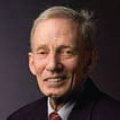
Professor Daniel (Pete) Loucks teaches courses and conducts research at Cornell University in the development and application of optimization and simulation models and decision support systems for predicting economic, environmental, and social impacts of alternative decisions with respect to the management of water and land resources. He has also held appointments at other universities here and abroad, served in UN organizations, the World Bank, and in public agencies and private firms. He is a fellow of the American Geophysical Union, a Distinguished Member of the American Society of Civil Engineers and a member of The National Academy of Engineering.
RUTHIE D. LYLE
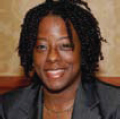
Dr. Ruthie D. Lyle joined IBM in 1999 soon after being recognized as the first African American woman to earn a doctorate in Electrical Engineering from Polytechnic Institute of New York University (NYU-Poly).
Her career experience with IBM spans assignments in Intellectual Property Monetization, Software Development and Hardware Development. Dr. Lyle is a registered Patent Agent, and the Team Lead Emeritus of IBM’s Smarter Planet Invention Review Team. She is an IBM Master Inventor and prolific inventor with 58 issued U.S. patents and over 170 pending patent applications. Most recently, she received the National Women of Color 2010 Technical Innovation Award for her technical contributions.
Dr. Lyle has a passion for supporting, and deep sense of responsibility towards furthering, initiatives targeted at encouraging women and minorities in STEM careers. Personally, she is an avid recreational runner and enjoys spending time with her husband and son.
JOAN McDONALD
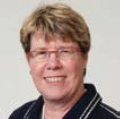
Joan McDonald was nominated by New York Governor Andrew M. Cuomo on January 14, 2011 to serve as the 11th Commissioner of the New York State Department of Transportation, and was unanimously confirmed by the New York State Senate on March 8, 2011.
An expert on transportation, infrastructure, economic development, policy and planning, Ms. McDonald serves as a key member of Governor Cuomo’s cabinet.
Commissioner McDonald’s vision for the Department focuses on two core components: (1) operating and maintaining New York’s transportation system safely and efficiently; and (2) delivering a world- class capital program on time and on budget. During her first year, Commissioner McDonald launched the Department’s new Capital Asset Management-Capital Investment (CAM-CI) program. This innovative program focuses on preservation, looking at New York’s transportation system in a sustainable way. Commissioner McDonald has received high marks for bringing transparency to the Department and for her collaboration with the design and construction industry.
Prior to her appointment, Commissioner McDonald served as the Commissioner of the Connecticut Department of Economic and Community Development. Her private sector experience includes five years as the Vice President in charge of New York and New Jersey at Jacobs Engineering. Ms. McDonald began her transportation career as Deputy Commissioner for Planning & Traffic Operations for the New York City Department of Transportation and as the Director of Capital and Long Range Planning for the MTA Metro-North Railroad.
DAVID MILLER

David Miller is Counsel, International Business and Sustainability at Aird & Berlis LLP. In that role, he assists the firm in the development of its international clean tech and renewable energy practices.
Mr. Miller is a leading advocate for the creation of sustainable urban economies. In addition to being a strong and forceful champion for the next generation of jobs through sustainability, he advises companies—and governments—on practical measures to make this happen.
He was Mayor of Toronto from 2003 to 2010. Under his leadership, Toronto became widely admired internationally for its environmental leadership, economic strength and social integration.
As Chair of the influential C40 Cities Climate Leadership Group from 2008 to 2010, Mr. Miller was instrumental in demonstrating the practical and real change cities are already making and can continue to make as they fight climate change and create sustainable employment. He continues that work today with the World Bank, OECD, UNEP and other national and international organizations to strengthen the capacity of City governments worldwide to act. He is the Future of Cities Global Fellow at Polytechnic Institute of New York University (NYU-Poly). He is a member of the David Suzuki Foundation Board, an Honorary Director of Canadian Association of Physicians for the Environment (CAPE) and Chair of Cape Farewell North America. Most recently, Mr. Miller was appointed by the Canadian Counsel of Academies to Chair an Expert Panel on “The Potential for New and Innovative Uses of Information and Communications Technologies (ICTs) for Greening Canada.”
David Miller is a Harvard trained economist and professionally a lawyer. He and his wife, lawyer Jill Arthur, are the parents of two children.
GERARD M. MOONEY
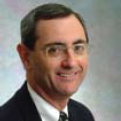
Gerard M. Mooney is currently Vice President, Global Smarter Cities. His team is responsible for delivering the set of initiatives that now form the center of IBM’s successful Smarter Planet offerings and that are playing a leading role in the transformation and modernization of governments and cities around the world in core functions like Intelligent Transportation, Public Safety, Advanced Water Management, Smart Grids and Green Buildings, as well as traditional government services.
Since joining IBM in 2000, Mr. Mooney has held a series of increasingly responsible positions in venture capital, strategy, technology, operations, and sales. Most recently, he was General Manager, Global Government and Education and, prior to that, he was IBM’s Vice President, Corporate Strategy with worldwide responsibility for IBM’s Emerging Business Opportunities program. He has also had responsibility for IBM’s Venture Capital organization. He serves as a member of the Board of Directors of the Intelligent Transportation Society of America (ITS America).
He holds an MBA from Yale University, an MS in Accounting from Georgetown University and a BA in Philosophy from Mount Saint Mary’s College.
THOMAS D. O’ROURKE
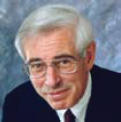
Dr. T.D. O’Rourke is the Thomas R. Briggs Professor of Engineering in the School of Civil and Environmental Engineering at Cornell University.
He is a member of the U.S. National Academy of Engineering and a Fellow of American Association for the Advancement of Science. He received several awards for his teaching and from professional societies, including the Collingwood, Huber Research, C. Martin Duke Lifeline Earthquake Engineering, Stephen D. Bechtel Pipeline Engineering, and Ralph B. Peck Awards from ASCE, the Hogentogler Award from ASTM, and Trevithick Prize from the British ICE.
He served as President of Earthquake Engineering Research Institute and as a member of numerous advisory boards and committees for NSF, NIST, and NRC. He authored or co-authored over 350 technical publications.
He served as chair or member of the consulting boards of many projects associated with highway, rapid transit, water supply, and energy distribution systems. His research interests cover geotechnical engineering, earthquake engineering, underground construction technologies, engineering for large, geographically distributed systems, and geographic information technologies and database management.
THEODORE (TED) S. RAPPAPORT
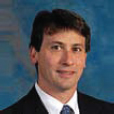
Dr. Theodore (Ted) S. Rappaport is the David Lee/Ernst Weber Professor of Electrical Engineering at the Polytechnic Institute of New York University (NYU-Poly) and is a Professor of Computer Science at New York University’s Courant Institute of Mathematical Sciences. He is also a Professor of Radiology at the NYU School of Medicine.
Rappaport serves as Director of the National Science Foundation (NSF) Industrial/ University Collaborative Research Center for Wireless Internet Communications and Advanced Technology (WICAT), a national research center that involves 5 major universities and is headquartered at NYU-Poly. He is also the founding Director of NYU WIRELESS, the world’s first academic research center to combine engineering, computer science, and medicine. Earlier, he founded two of the world’s largest academic wireless research centers: The Wireless Networking and Communications Group (WNCG) at the University of Texas at Austin in 2002, and the Mobile and Portable Radio Research Group (MPRG), now known as Wireless@ at Virginia Tech, in 1990.
Dr. Rappaport is a pioneer in radio wave propagation for cellular and personal communications, wireless communication system design, and broadband wireless communications circuits and systems at millimeter wave frequencies. His research has influenced many international wireless-standards bodies, and he and his students invented the technology of site-specific radio frequency (RF) channel modeling and design for wireless network deployment - a technology now used routinely throughout wireless communications.
Dr. Rappaport has served on the Technological Advisory Council of the Federal Communications Commission, assisted the governor and CIO of Virginia in formulating rural broadband initiatives for Internet access, and conducted research for NSF, Department of Defense, and dozens of global telecommunications companies. He has over 100 U.S. or international patents issued or pending and has authored, co-authored, and co-edited 18 books, including the world’s best selling books on wireless communications and smart antennas.
In 1989, he founded TSR Technologies, Inc., a cellular radio/PCS software radio manufacturer that he sold in 1993 to what is now CommScope, Inc. (taken private in 2011 by Carlyle Group). In 1995, he founded Wireless Valley Communications, Inc., a pioneering creator of site-specific radio propagation software for wireless network design and management that he sold in 2005 to Motorola.
He received BS, MS, and PhD degrees in electrical engineering from Purdue University, and is an Outstanding Alumni of his alma mater.
KATEPALLI R. SREENIVASAN
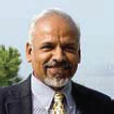
Katepalli Sreenivasn has been University Professor at New York University since September 2010, where he also serves as Senior Vice Provost in charge of science and technology, and as Provost of the Polytechnic Institute of NYU. Prior to coming to NYU, he served from 2003 to 2009 as the Director of the International Centre for Theoretical Physics in Trieste, Italy, for nearly seven years. Earlier, he taught at the University of Maryland as Distinguished University Professor, Glenn L. Martin Professor of Engineering, and Professor of Physics, and also served for a year and a half as the Director of the Institute for Physical Science and Technology. Previously, Dr. Sreenivasan joined the faculty of the Department of Engineering and Applied Science at Yale University in 1979 and held several posts at Yale until 2002, including the Harold W. Cheel Professor of Mechanical Engineering (19882002), joint appointments in the Departments of Physics, Applied Physics and Mathematics; Chair of the Mechanical Engineering Department (1987-1992) and the Acting Chairman of the Council of Engineering (1989). His post-doctoral work included two years of work in Australia and at Johns Hopkins University for a similar period of time. He has been a Visiting Professor at Caltech, Rockefeller University, Cambridge University, and the Institute for Advanced Study at Princeton, among others.
Dr. Sreenivasan’s honors include: Guggenheim Fellowship;
Otto Laporte Memorial Award of American Physical Society; TWAS Medal Lecture in Engineering Science; Distinguished Alumnus Award and Centennial Professorship of the Indian Institute of Science; Sir C.V. Raman Visiting Professorship of the Indian Academy of Sciences; the International Prize and Gold Medal in memory of Professors Modesto Panetti and Carlo Ferrari, Academia delle Scienze di Torino, Italy; National Order of Scientific Merit (the highest scientific honor) by the Brazilian Government and the Academy of Sciences; UNESCO Medal for Promoting International Scientific Cooperation and World Peace from the World Heritage Centre, Florence, Italy; President Dr. Zakir Husain Memorial Award from the Duty Society and the Indian Society of Applied and Industrial Mathematics; Honorary Membership, Academia Torre e Tasso, Duino-Aurisina, Trieste, Italy; the Melvin Jones Fellow of the Lions Club (for humanitarian service); the Dwight Nicholson Medal of the American Physical Society for human outreach, and the 2009 Nusselt-Reynolds Prize from the Assembly of World Conference on Experimental Heat Transfer, Fluid Mechanics and Thermodynamics; the 2009 AAAS award for International Scientific Cooperation; and the 2011 Multicultural Leadership Award of the National Diversity Council.
Sreenivasan has been elected to the Indian Academy of Sciences and the Indian National Science Academy, the Academy of Sciences for the Developing World (TWAS), and the African Academy of Sciences, the US National Academy of Sciences, US National Academy of Engineering and the American Academy of Arts and Sciences. Within the National Academies, Dr. Sreenivasan has served on the NAE Committee on Membership and the Mechanical Engineering Section (chair, vice chair, member) and the Mechanical Engineering Peer Committee (chair, vice chair, member); the NAS Class III Membership Committee; the NRC Committee on Human Rights of the NAS, NAE, and IOM; the Committee on Condensed- Matter and Materials Physics; and the Nonlinear Dynamics and Fractals Committee; and on the Proceedings of the National Academy of Sciences Editorial Board.
ROBERT K. STEEL
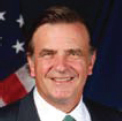
Robert K. Steel is New York City Deputy Mayor for Economic Development. He is responsible for the Bloomberg Administration’s five-borough economic development strategy and job-creation efforts, as well as its efforts to expand job training, strengthen small business assistance, promote new industries, diversify the economy, and achieve the goals of the New Housing Marketplace Plan, which is designed to build or preserve enough affordable housing for 500,000 New Yorkers by 2014. He spearheads the Administration’s major redevelopment projects, including those in Lower Manhattan, Flushing, Hunters Point South, Coney Island, Stapleton, the South Bronx, and Hudson Yards. Deputy Mayor Steel oversees such agencies as the Department of Housing Preservation and Development, Department of City Planning, Department of Small Business Services, NYC Economic Development Corporation and NYC & Company, and he serves as Chair of Brooklyn Bridge Park board.
Prior to his 2010 appointment as Deputy Mayor, Mr. Steel was the President and CEO of Wachovia. From 2006 to 2008, he was the Under Secretary for Domestic Finance at the U.S. Department of the Treasury. Prior to entering government service, Mr. Steel spent nearly 30 years at Goldman Sachs, ultimately rising to become co-head of the U.S. Equities Division and Vice Chairman of the firm. He is a graduate of Duke University and the University of Chicago’s Booth School of Business, and has distinguished himself as Chairman of Duke’s Board of Trustees, Chairman of the Aspen Institute’s Board of Trustees, Senior Fellow at the Harvard Kennedy School of Government, a member of the FDIC Advisory Committee on Economic Inclusion, Chairman of The After-School Corporation, and Co-Founder of SeaChange Capital Partners, an organization dedicated to helping nonprofits grow.
CARTER H. STRICKLAND, JR.
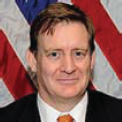
Carter H. Strickland, Jr. is Commissioner of the New York City Department of Environmental Protection (DEP), whose 6,000 employees provide more than 1.0 billion gallons of water each day to more than 9 million New Yorkers, treat more than 1.3 billion gallons of water every day, and regulate local air quality. Prior to being
Commissioner, Mr. Strickland was the Deputy Commissioner for Sustainability at DEP where he oversaw the agency’s environmental planning, analysis, permitting, and enforcement programs. Before joining DEP, Mr. Strickland was the Senior Policy Advisor for Air and Water with the Mayor’s Office of Long Term Planning and Sustainability, where he was responsible for the implementation of New York City’s sustainability plan, PlaNYC 2030, across all agencies and departments, with a focus on water, air, and natural resource issues. Commissioner Strickland graduated from Dartmouth College, cum laude, and earned his law degree from the Columbia University School of Law, where he served as Executive Editor of the Columbia Journal of Environmental Law. He lives in Brooklyn Heights with his wife and their two children.
RICHARD S. THORSEN
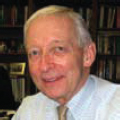
Dr. Richard S. Thorsen is Vice President Emeritus and Senior Advisor to the President and Provost of Polytechnic Institute of New York University.
A Mechanical Engineer with a Ph. D. from New York University, he has been a member of the Mechanical Engineering faculty since 1964. He served as Head of the Department of Mechanical Engineering and then Head of Mechanical and Aerospace Engineering at Polytechnic Institute of New York (now Polytechnic Institute of New York University) from 1974 to 1983. He introduced Polytechnic’s first computer-based instructional laboratory.
He has since served as Associate Provost for Computing and Information Systems, Dean of Graduate Studies, Vice President for Research and Advanced Programs, Vice President for Development and University Relations, lead for the $275 million Fulfilling the American Dream Campaign, and Vice President for Academic Affairs.
He is widely published in heat transfer and solar energy literature and has led major government- and industry- sponsored research projects in these areas, and has been Principal Investigator on more than $25 million of sponsored research programs.
Dr. Thorsen was instrumental in the negotiations which led to the 1973 merger of Polytechnic Institute of Brooklyn and the New York University School of Engineering and Science, and its subsequent successful implementation. In 2007-2008 he played a leading role in the negotiations that led to Polytechnic’s current affiliate relationship NYU.
LIVABLE CITIES OF THE FUTURE
A SYMPOSIUM HONORING THE LEGACY OF GEORGE BUGLIARELLO
SYMPOSIUM CHAIRS & MODERATORS
JERRY M. HULTIN
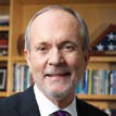
Jerry M. Hultin is president of Polytechnic Institute of New York University. In this capacity he heads one of the nation’s oldest private science and engineering schools. An innovative resource for science, engineering and technology management, Polytechnic Institute has produced a notable list of corporate, academic, research and engineering leaders—including three Nobel laureates—since it was founded in 1854.
During his first three years as President of Polytechnic, Mr. Hultin led a university- wide initiative of redefining Polytechnic’s role for the 21st Century. The resulting strategic plan was approved by Poly’s Board of Trustees in May 2007 and focuses the Institute on introducing invention, innovation, and entrepreneurship—known as i2e—into all of its academic, research, and technology commercialization programs.
For instance, in order to increase entrepreneurial opportunity at Poly and throughout NYC, Polytechnic joined with the NYC Investment Fund and the New York State Technology and Research Authority in funding a new $2 million venture capital fund, NYCSeed, located at Polytechnic and specifically designed to support innovative new ideas for information technology and Web 2.0 products and services.
On July 1, 2008, under Mr. Hultin’s leadership and with the support of Poly’s Board, faculty, and students, Polytechnic became an affiliate of New York University, one of the leading comprehensive research universities in the nation. This strategic new alliance adds Polytechnic’s prowess in technology and engineering to NYU’s comprehensive educational and research strengths and provides Polytechnic with substantial resources and opportunities for education, research, and technology commercialization in NYC and around the world.
Before joining Polytechnic University, Mr. Hultin was Dean of the Wesley J. Howe School of Technology Management and Professor of Management at Stevens Institute of Technology in Hoboken, N.J. At Stevens, Mr. Hultin expanded the Howe School’s graduate programs in technology management and presided over a major increase in research funding.
From 1997 to 2000 Mr. Hultin served as Under Secretary of the Navy, the Department’s number two civilian leader. In this position, he led numerous programs that supported innovation in strategic vision, war fighting and business operations to meet the evolving needs of the Navy and Marine Corps in the 21st Century.
Mr. Hultin’s major accomplishments as Under Secretary included taking a leadership role in the Department of the Navy’s Revolution in Business Affairs, which brought private-sector business acumen to both the Navy and Marine Corps. He was one of the creators of the Navy-Marine Corps Corporate Intranet and led a major study of the impact of globalization on national security and naval forces conducted by the National Defense University. In 2003 Mr. Hultin served as the on-air military analyst for WNBC in New York City during the Iraq War.
Over the course of his career, Mr. Hultin has helped create and support a number of national, non-profit programs that provide leadership, community development and job skills to young people from all walks of life.
Mr. Hultin is an Honorary Fellow of the Foreign Policy Association, the founding Chairman of the Technology Management Education Association, and an advisor to senior military and defense leaders. He is on the boards of the Advanced Energy Research & Technology Center, Center for an Urban Future, the Downtown Brooklyn Partnership, the National Action Council for Minorities in Engineering (NACME), British American Business, among others. He is a member of the New York Academy of Sciences, International Association of University Presidents, American Council on Education (ACE), the Commission on Independent Colleges and Universities (CICU),
and Association of University Research Parks.
Mr. Hultin is married to Jill Foreman Hultin, a management consultant, and they have two grown sons.
MOHAMMAD KARAMOUZ
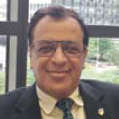
Professor Mohammad Karamouz is Director of Environmental Engineering/Science programs in the Dept. of Civil and Urban Engineering at NYU-Poly since 2008. Prior to that among his academic assignments, he was the Dean of Engineering and a Professor in the School of Architecture (Dept. of City & Regional Planning) at Pratt Institute. He was also a visiting Professor at the University of Arizona. He founded and was president of Arch Construction and Consulting Co. Inc. in Queens, New York for 10 years and worked as a Professional Engineer providing a wide range of civil engineering services as well as promoting entrepreneurship and creating jobs for many civil engineers in NYC metropolitan area. He is a Fellow of American Society of Civil Engineers, and a Diplomat of American Academy of Water Resources Engineers.
Dr. Karamouz received his BS degree in Civil Engineering from Shiraz University, MS in Water and Environmental Engineering from George Washington University, and PhD in Hydraulics and Systems Engineering from Purdue University. He has made significant accomplishments in the field of water resources through research, teaching, graduate student supervision, private consulting, and various scientific publications including 6 books (5 text books) and more than 300 papers. He has over 850 citations according to Google Scholars, and 560 Citations according to the Web of Knowledge/Science. His areas of research include Environmental Systems Management and Environmental Sustainability, Climate Change Studies, Large Scale Signals Rainfall and Flood Forecasting, Urban Water Infrastructures, Flood Resistant Cities, Water Security, Disaster Management, Large Scale Watershed Management, Data Mining, Development of Large scale Water Supply/Demand Decision Support Systems, and Environmental/Climate Management Information Systems.
Dr. Karamouz has served in many leadership positions in a number of national and international societies including ASCE, AGU, AWRA, IWRA and USCOLD (US Committee on Large Dams). He has been the editor of Iran-Water Resources Research Journal for 8 years and a member of editorial board of major journals including ASCE Journal of Water Resource Planning and Management. He is currently the chairman of ASCE- EWRI International Council. Dr. Karamouz has developed Decision Support Systems and operation models for 9 major watersheds with transboundary water conflict issues in the Middle East. He has had major research grants and contracts from NSF, World Bank, UNESCO, International Water Authority Boards, Utility Companies and other national and international organizations.
JOHN C. FALCOCCHIO
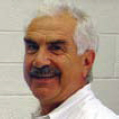
Dr. John C. Falcocchio is Professor of Transportation Planning and Engineeri ng in the Department of Civil and Urban Engineering and Director of the Urban Intelligent Transportation Systems Center (UITSC) at Polytechnic Institute of New York University.
As Director of UITSC, he has facilitated and catalyzed the dialogue between the academic community and federal, state, and city agencies related to ITS deployment in New York City.
He has many years of experience both as an educator/ researcher and as a practicing professional. His main research interests are in traveler and freight mobility, access to urban activities, and transportation system productivity. He teaches courses in the analysis, planning, and management of urban transportation systems, and has written scholarly and professional papers and one book on these subjects.
Dr. Falcocchio is Chairman of the Board of the University Transportation Research Center, Region 2—a consortium of seventeen universities—and is a registered Professional Engineer in Pennsylvania, New York, and California.
He holds a Bachelor in Civil Engineering and a Ph.D. (Transportation Planning) from the Polytechnic Institute of Brooklyn, and a graduate degree in Traffic Engineering from the Bureau of Highway Traffic, Yale University.
PAUL M. HORN
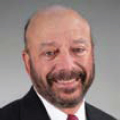
Dr. Paul Horn was named NYU Distinguished Scientist in Residence in September of 2007 and Senior Vice Provost for Research in September 2009. Prior to his NYU position, he was Senior Vice President of the IBM Corporation and Executive Director of Research. In this job, he directed IBM’s worldwide Research program with 3200 technical employees in eight sites in five countries around the world, and helped guide IBM’s overall technical strategy. Under his leadership, IBM Research produced an unmatched string of technological breakthroughs, including the chess-playing supercomputer Deep Blue, the world’s first copper chip, the giant magneto-resistive head (GMR), strained silicon (a discovery that allows chips to run up to 35 percent faster), and BlueGene the world’s fastest supercomputer that brought computing leadership back to the United States.
Dr. Horn graduated from Clarkson College of Technology and received his doctoral degree in physics from the University of Rochester in 1973. Prior to joining IBM in 1979, Dr. Horn was a professor of physics in the James Franck Institute and the Physics Department at the University of Chicago. Dr. Horn is a Fellow of the American Physical Society and was a member of the National Academy of Engineering. In addition to NYU-Poly he is a member of numerous professional committees and boards including the GAO (General Accountability Office) board of advisors, the board of trustees of the Committee for Economic Development, NYC Seed, and New Venture Partners.
ILAN JURAN
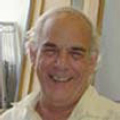
Dr. Ilan Juran is Executive Director of the Urban Infrastructure Institute and Urban Utility Center at Polytechnic Institute of New York University, a Professor of Civil and Environmental Engineering, and former Department Head and Chairman of NYU-Poly’s Department of Civil and Urban Engineering. He also serves as Executive Director of W- SMART (Water Security Management Assessment, Research and Technology).
Dr. Juran was a Senior Advisor of Technology and Science and Chair of the United Nations Development Program (UNDP) Task Force ECO-INWARDS on Economic Integration of Neutralized Waste as a Resource Deployment Strategy. He holds a DSc (Doctorat Es Science) in Applied Mechanics and a PhD in Soil Mechanics, both from University of Paris.
LIVABLE CITIES OF THE FUTURE
A SYMPOSIUM HONORING THE LEGACY OF GEORGE BUGLIARELLO
POLYTECHNIC INSTITUTE OF NEW YORK UNIVERSITY
Polytechnic Institute of New York University (formerly Polytechnic University), an affiliated institute of New York University, is a comprehensive school of engineering, applied sciences, technology and research, and is rooted in a 158-year tradition of invention, innovation and entrepreneurship: i2e. The institution, founded in 1854, is the nation’s second-oldest private engineering school. In addition to its main campus in New York City at MetroTech Center in downtown Brooklyn, it also offers programs at sites throughout the region, around the globe, and remotely through NYUe-Poly. NYU-Poly is an integral part of NYU Abu Dhabi, NYU Shanghai and the Center for Urban Science and Progress (CUSP) in downtown Brooklyn. For more information, visit www.poly.edu.
NYU-POLY DEPARTMENT OF CIVIL AND URBAN ENGINEERING
The ABET-accredited Department of Civil and Urban Engineering at NYU-Poly offers BS, MS, and PhD degrees in civil engineering. With a distinguished history of research in urban infrastructure engineering and planning as well as environmental sustainability, the department is dedicated to advancing the body of knowledge and professional practice of civil and urban engineering to meet the imminent and ever-changing challenges of the future. Offering students the benefits of the most highly regarded faculty, the department continues to utilize the real-world urban laboratory of New York City and produce leaders prepared to meet the needs of an increasingly complex world with breakthrough advances in the field. This symposium is NYU-Poly’s Department of Civil and Urban Engineering’s tribute to George Bugliarello.
NEW YORK UNIVERSITY
New York University, which was established in 1831, is one of the largest and most prestigious private research universities in the U.S. It has more international students than any other U.S. college or university. Through its numerous schools and colleges, NYU conducts research and provides education in the arts and sciences, law, medicine, dentistry, education, nursing, business, social work, the cinematic and performing arts, public administration and policy, and continuing studies, among other areas.
METROTECH CENTER
George Bugliarello’s vision was the creative force behind the development of MetroTech, the 16-acre urban university-industry park in downtown Brooklyn. The creation of Metro- Tech heralded the gentrification of the area and created over 20,000 jobs. The center attracted employers in major industries such as banking, utilities, securities, the New York City Fire Department, and large hotel chains such as the Marriott and Sheraton. Its success has proven to be a primary case study in university, corporate, government, and private developer cooperation.
CUSP
In April 2012, New York City announced the launch of the Center for Urban Science and Progress (CUSP), an applied science research institute created by NYU and Polytechnic Institute of NYU, with a consortium of world- class universities and the foremost international tech companies to address the needs of cities. Generating an entirely new sector in New York City’s economy and placing it at the center of a global stage in this field, CUSP will be located in MetroTech in a city- owned building steps from NYU-Poly.
SYMPOSIUM COMMITTEE
SYMPOSIUM CHAIR
Jerry M. Hultin
President, NYU-Poly
HONORARY CHAIR
Paul Soros
SYMPOSIUM CO-CHAIR
Mohammad Karamouz
Director, Environmental Engineering and Science Programs, NYU-Poly
STEERING COMMITTEE
Thomas F. Budinger
Home Secretary, National Academy of Engineering; Professor of the Graduate School, University of California, Berkeley; Senior Scientist, Lawrence Berkeley National Laboratory
Virginia Bugliarello
Lawrence Chiarelli
Interim Head, NYU-Poly Department of Civil and Urban Engineering
Robert D. Dalziel
Vice President (ret), AT&T Global Networks
Lance A. Davis
Executive Officer, National Academy of Engineering
Kristen Day
Head, NYU-Poly Department of Technology, Culture and Society
Rose J. Emma
Former Assistant to George Bugliarello
John C. Falcocchio
Director NYU-Poly Urban Intelligent Transportation Systems Center
Ivan T. Frisch
Former Executive Vice President and Provost NYU-Poly
Kathleen Hamilton
Director, NYU-Poly Marketing & Communications
Andrew W. Herrmann
President, American Society of Civil Engineers
Paul M. Horn
Distinguished Scientist in Residence & Senior Vice Provost for Research, NYU
Ilan Juran
Executive Director, NYU-Poly Urban Infrastructure Institute and Urban Utility Center
Steven E. Koonin
Director, Center for Urban Science and Progress
Thomas D. O’Rourke
Thomas R. Briggs Professor of Engineering, Cornell University
Theodore S. Rappaport
David Lee/Ernst Weber Professor of Electrical Engineering, NYU- Poly; Professor of Computer Science, NYU Courant; Professor of Radiology, NYU School of Medicine
Katepalli R. Sreenivasan
Provost, NYU-Poly; Senior Vice Provost for Science and Technology, NYU
Richard S. Thorsen
Vice President Emeritus and Senior Advisor to the President and Provost, NYU-Poly
Charles M. Vest
President, National Academy of Engineering; President Emeritus, Massachusetts Institute of Technology
William. A. Wulf
President Emeritus, National Academy of Engineering; University Professor and AT&T Professor of Engineering and Applied Sciences, University of Virginia
Rae Zimmerman
Professor of Planning and Public Administration, Robert F. Wagner Graduate School of Public Science; Director, Institute for Civil Infrastructure Systems (ICIS), NYU
NYU-Poly’s Civil and Urban Engineering Department
partnered with the Center for Urban Science and Progress (CUSP),
the National Academy of Engineering,
and the American Society of Civil Engineers
to organize and sponsor “Livable Cities of the Future.”
![]()
We wish to thank the sponsors*
for making the inaugural George Bugliarello Symposium possible:

Mr. Walter Bell, ’55
Center for Urban Science and Progress, sponsor of the October 25 Icebreaker
Mr. Robert Dalziel, ’56
Hardesty and Hanover
Dr. Tin-Kan Hung
Mr. Craig Matthews, ’71, ’09 Hon
University Transportation Research Center
*As of October 15, 2012























